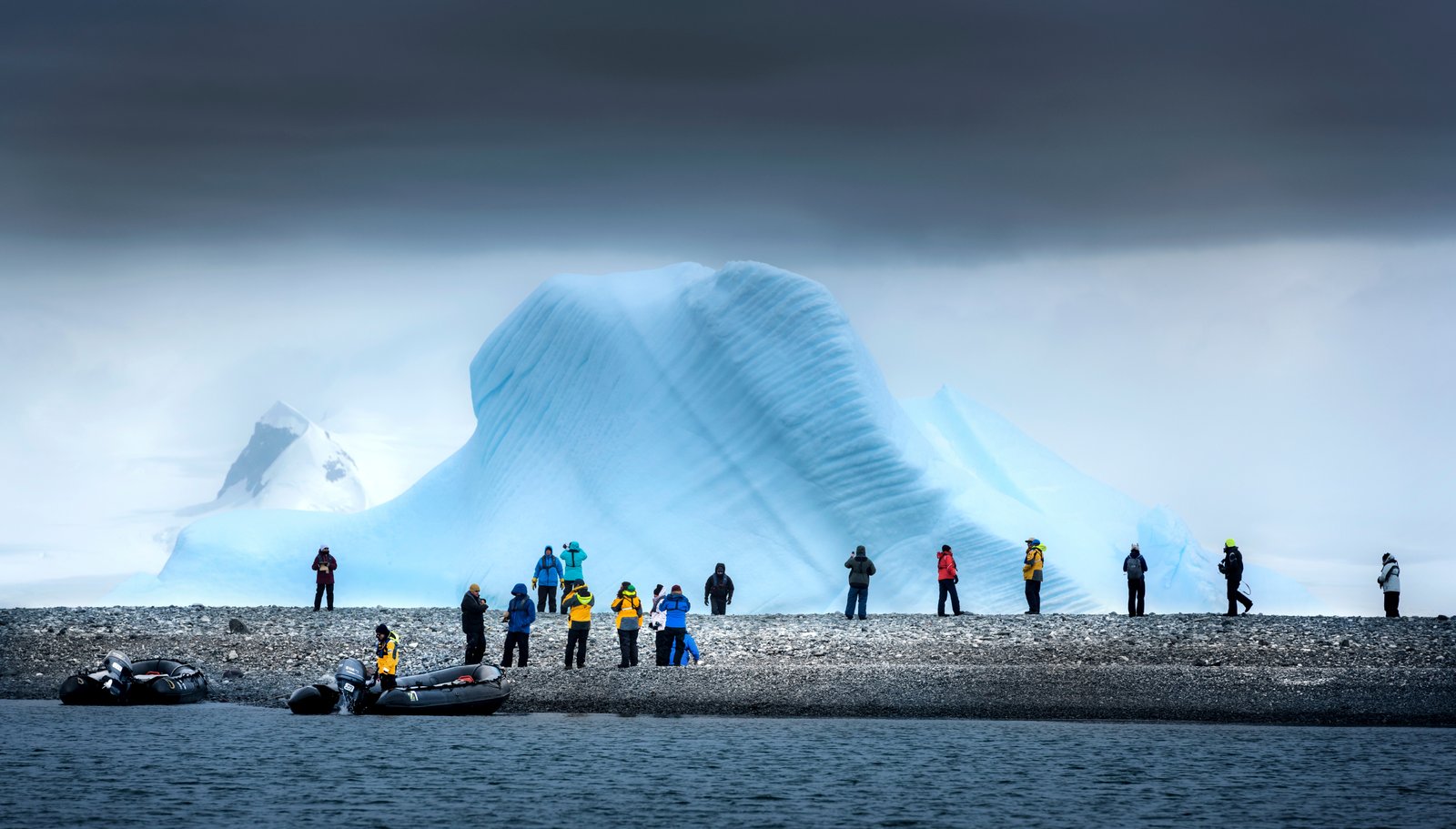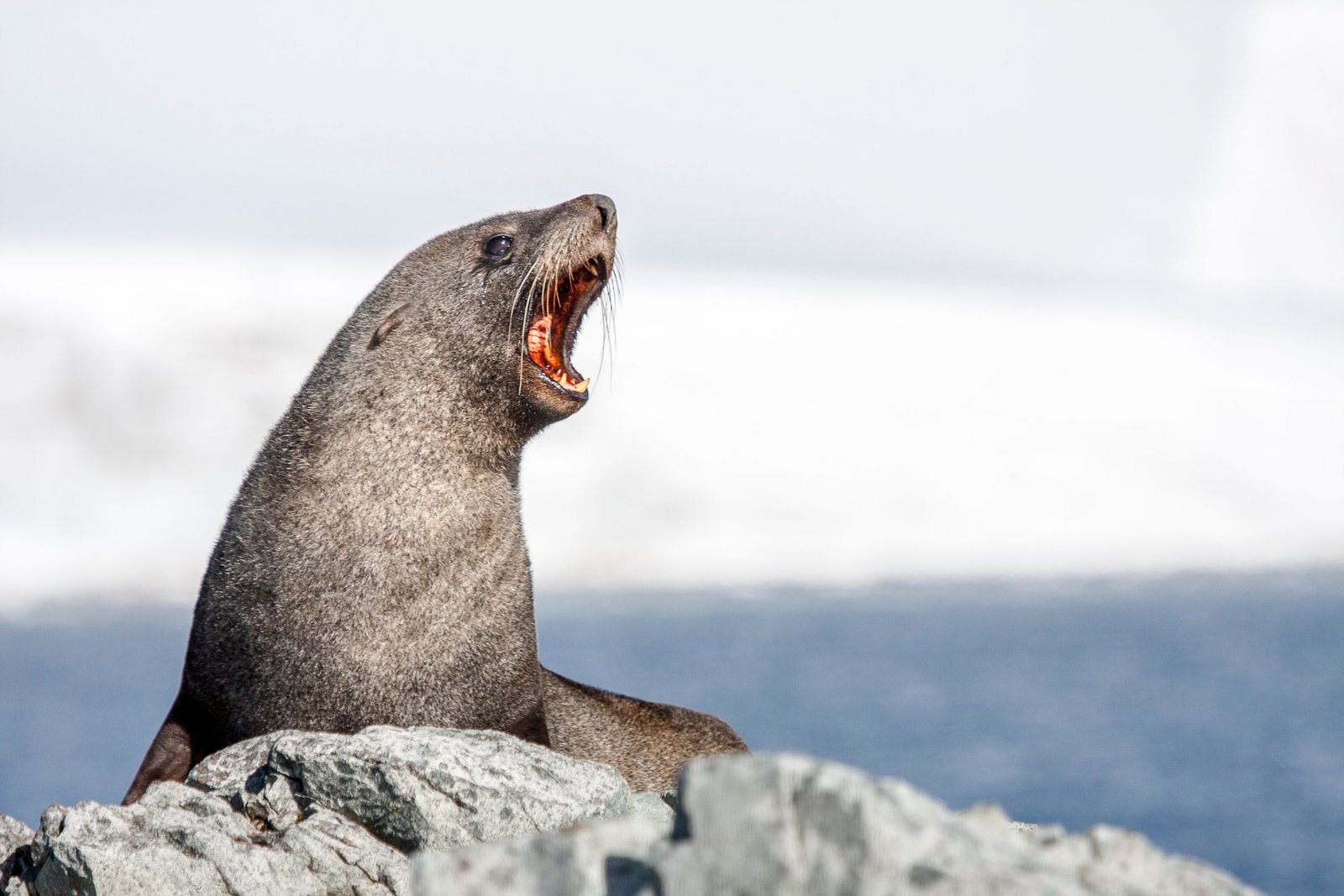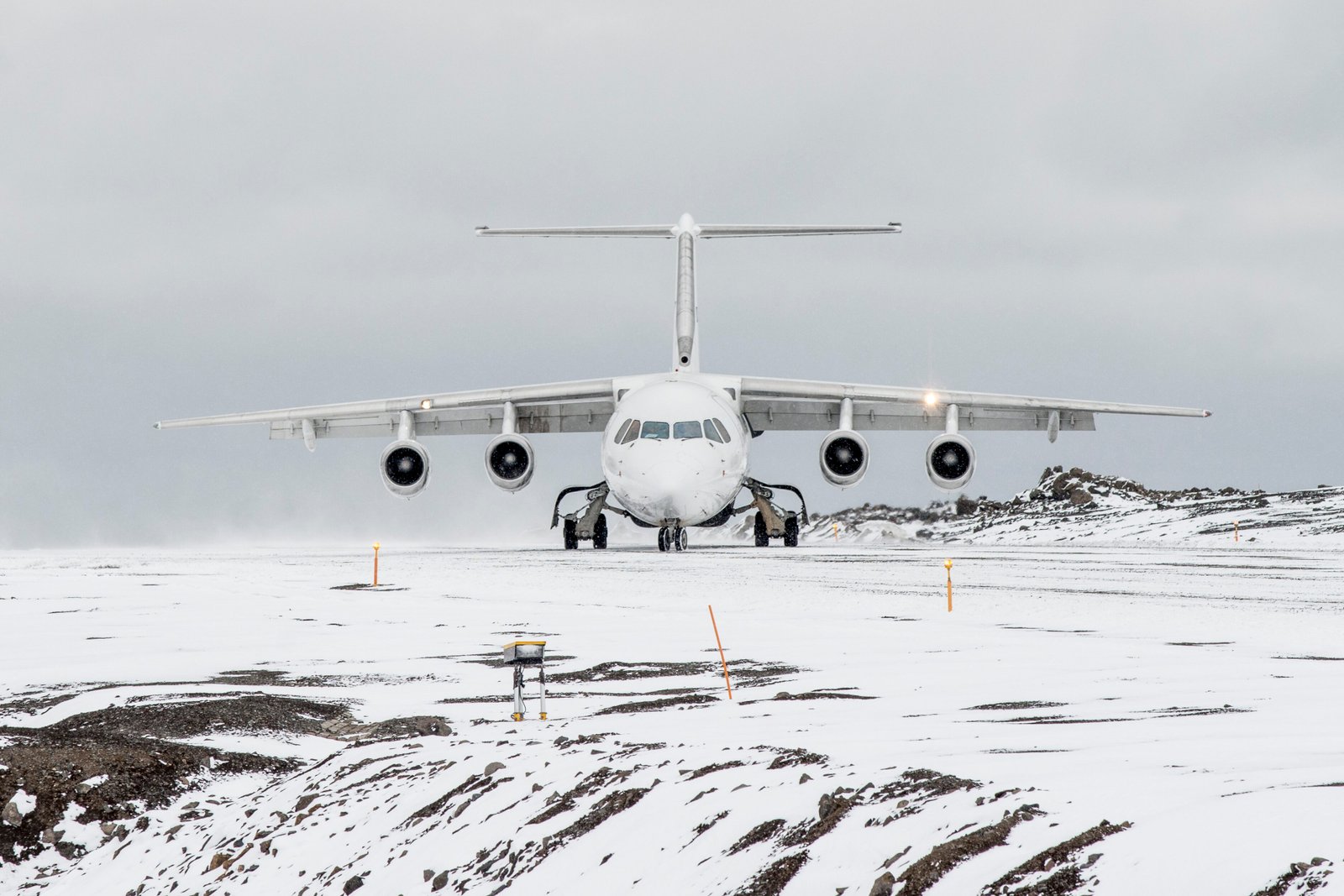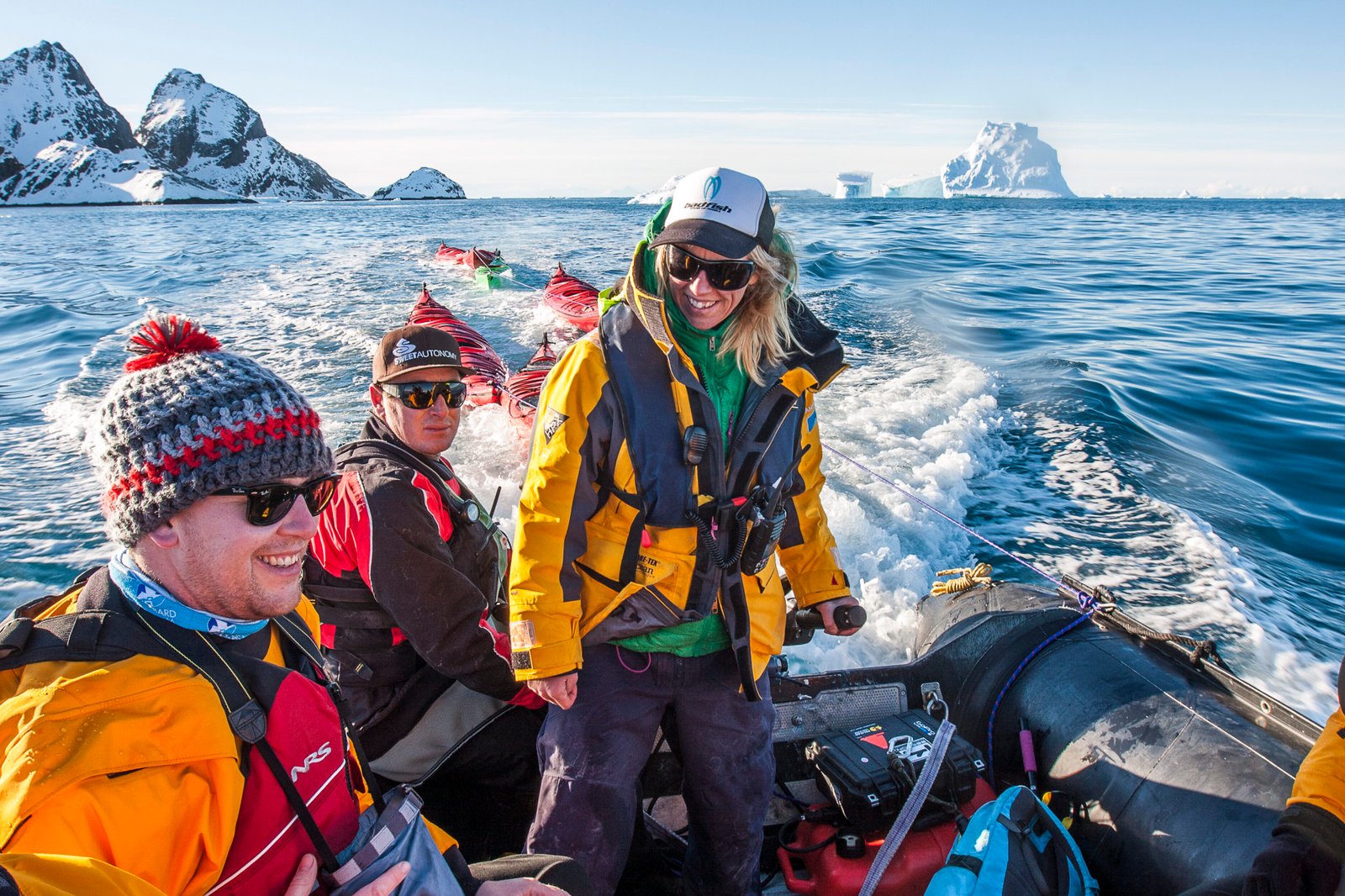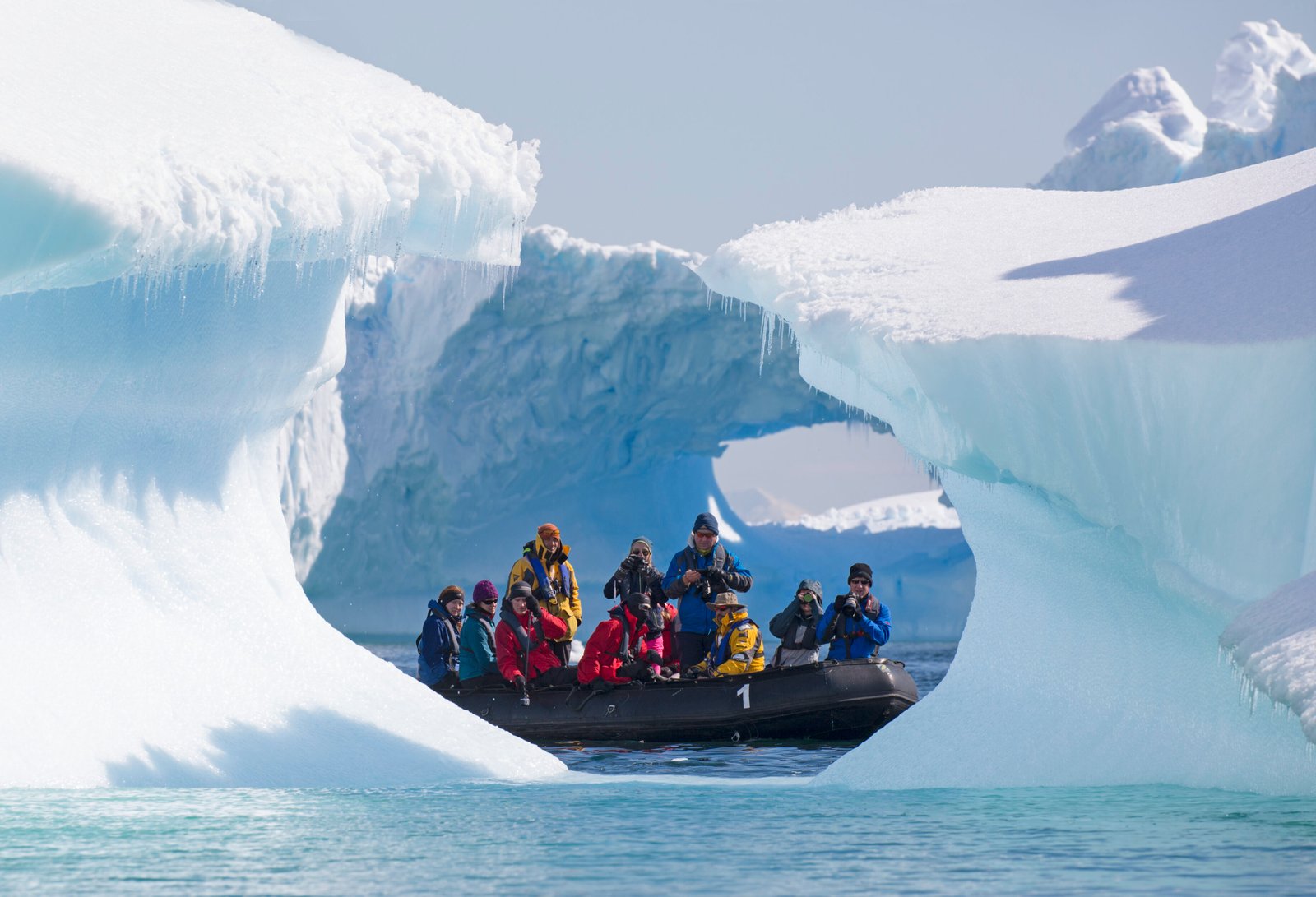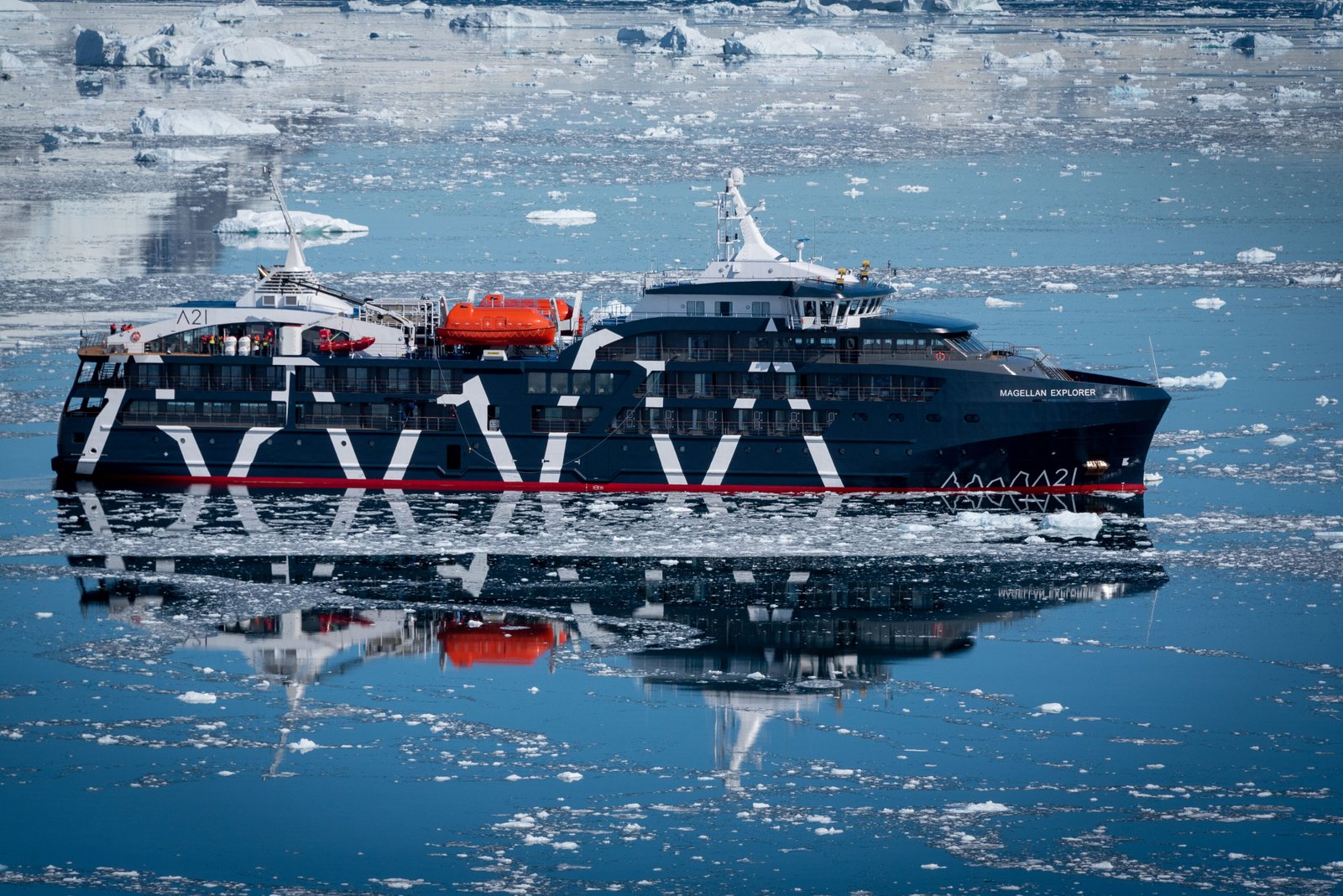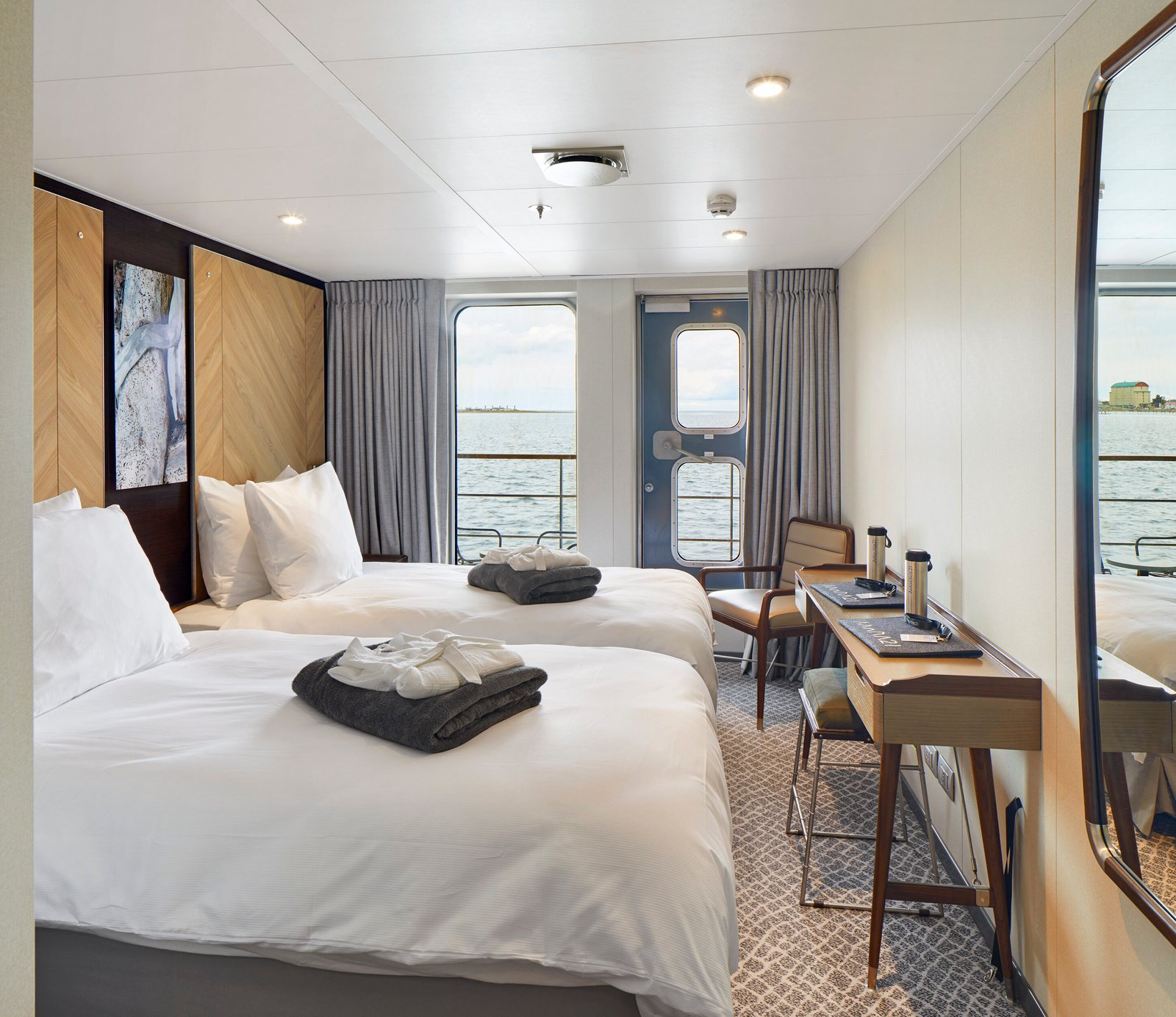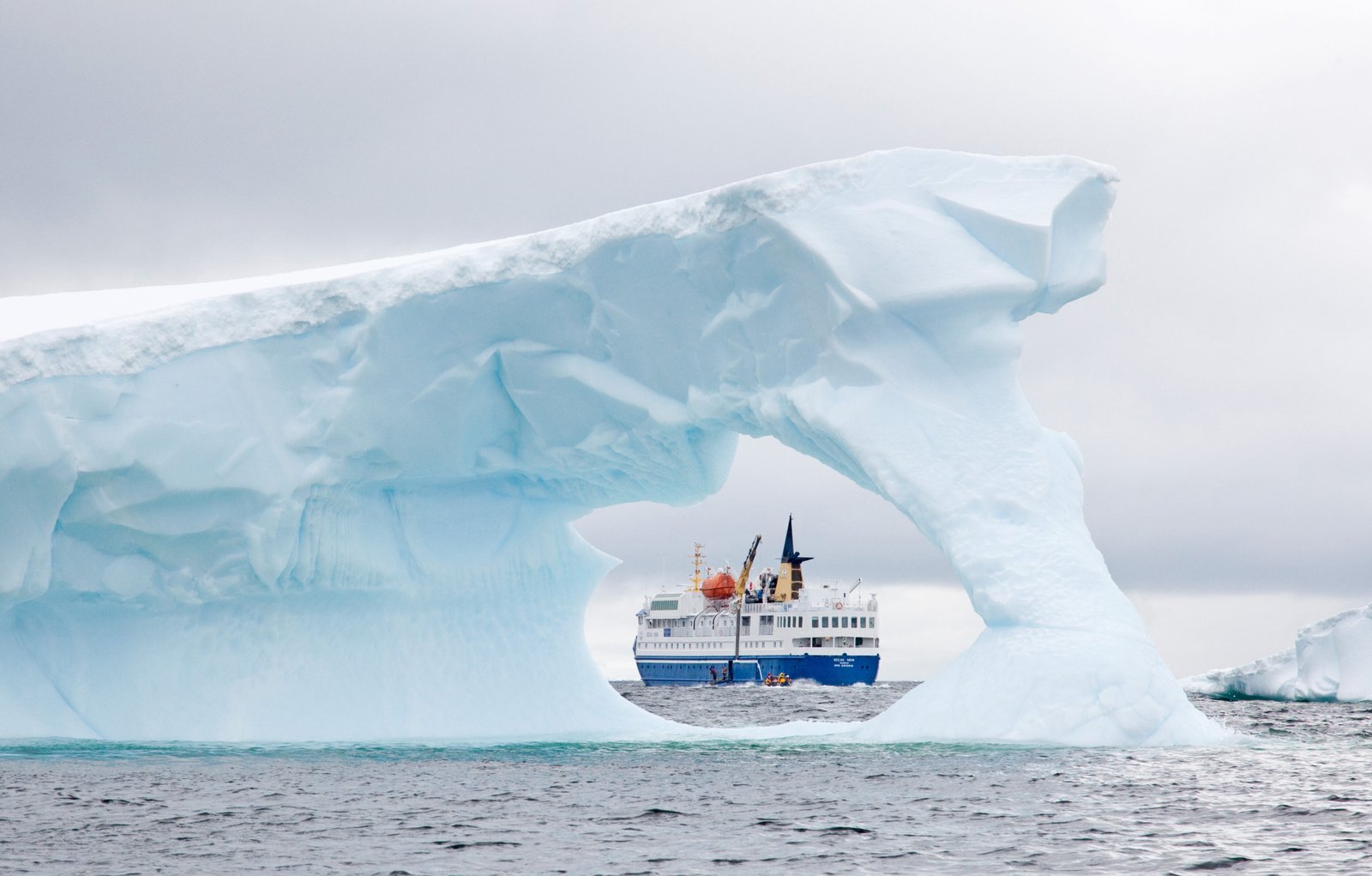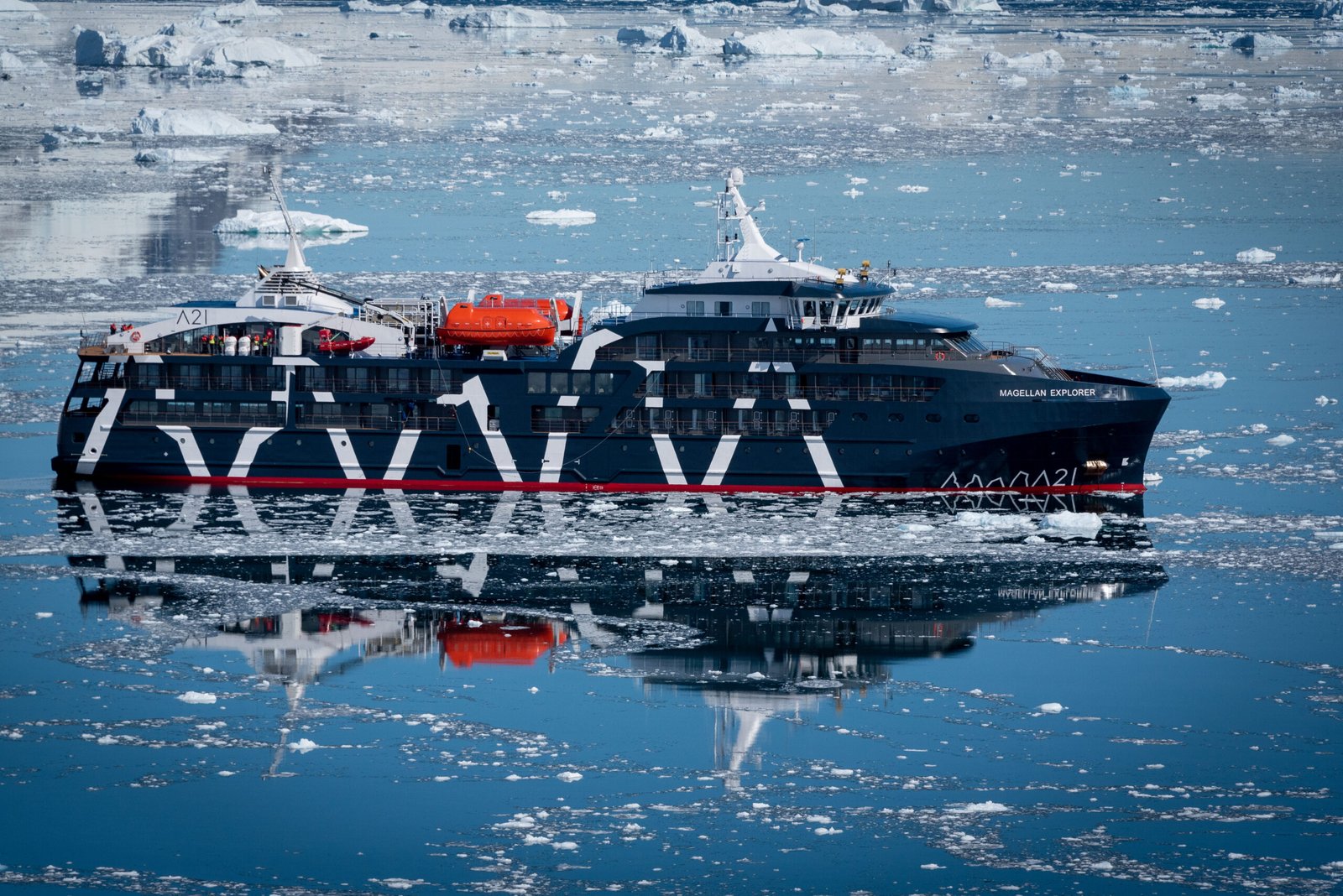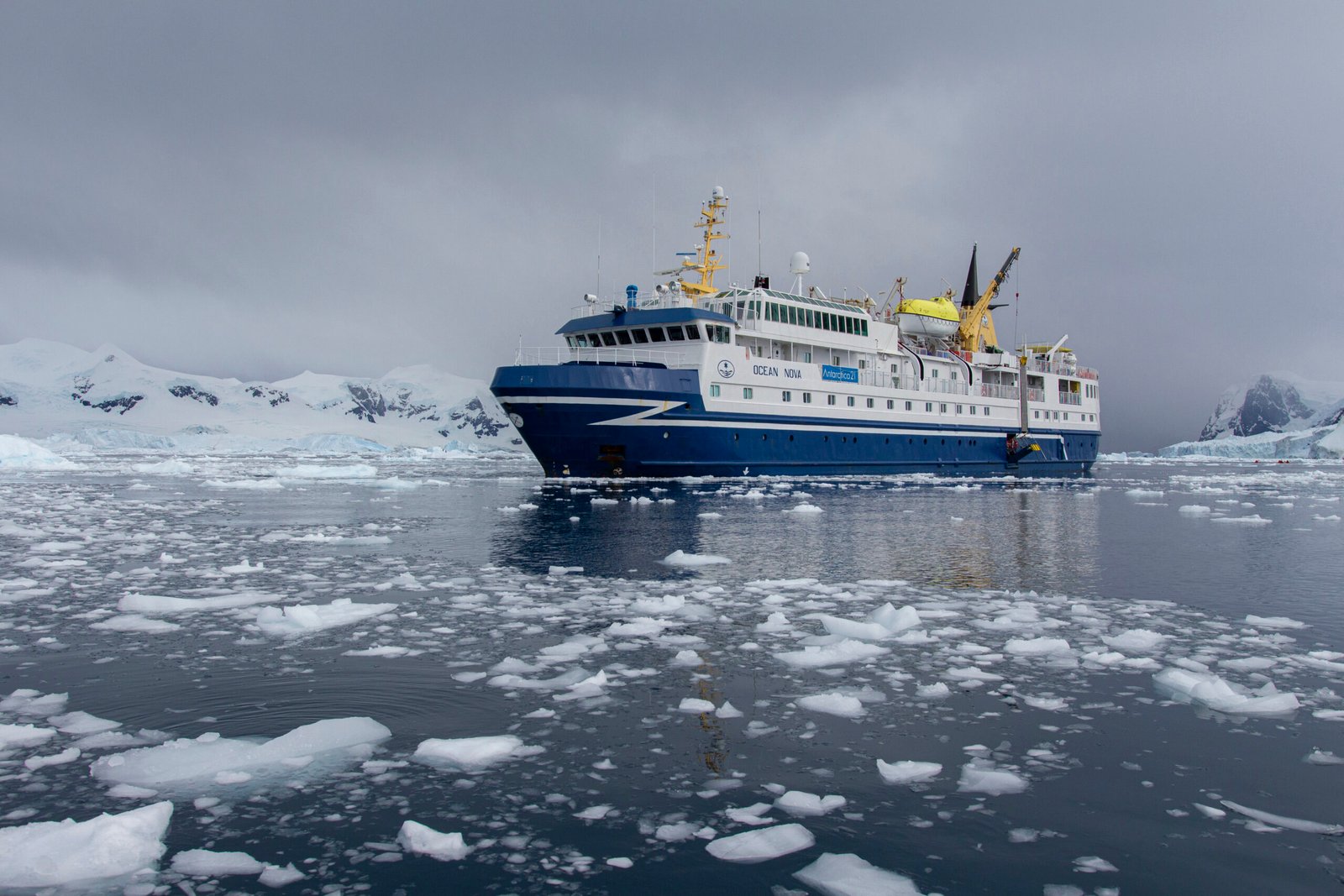Antarctica Cruise & FLY
ANTARCTICA 21 – FLY & CRUISE EXPEDITION
Antarctica21 operates Fly & Cruise Expeditions to Antarctica and Sea Voyages to Cape Horn, the Falkland Islands (Islas Malvinas), South Georgia & Antarctica. These trips are boutique wilderness adventures taking you to Antarctica and beyond. Enjoy small ship experiences that allow you time to explore our remote destinations.
There´s still a side of the Earth that remains virtually untouched. An entire continent of windswept expanses, snow-shrouded peaks, and haunting emptiness stretching to the far horizon. A place where ice takes on hues of turquoise and iridescent blue so surreal, you feel you´ve entered a dream world. Where even as you reach for words to describe your sense of awe, you realize none will ever capture the experience of being here.
WHY ANTARCTICA21?
Fly The Drake
Our two-hour flight takes you from Punta Arenas, the Chilean gateway to Patagonia, directly to Antarctica, where you then board your expedition ship. No stormy crossing. No seasickness. Just quick, total immersion in your Antarctic adventure.
Explore Antarctica
Our small expedition vessels are more like private yachts, offering direct access to areas along the Antarctic shore that larger ships simply can’t reach. Since we have fewer guests, you get on and off faster, so your time ashore is focused where it should be: savoring every moment of a travel experience unlike any other.
Landscape
A land that holds 90% of Earth´s ice, Antarctica stuns visitors with its awe-inspiring beauty. See peaceful bays dotted with colossal icebergs; cruise along deep fjords and see massive glaciers; be amazed by sharp snowy peaks that jut out of the sea.
Adventure
Feel the spray of seawater on your cheeks as you cruise in a Zodiac boat to shore. Follow in the footsteps of early explorers as you hike on Antarctic soil. Join our optional Sea Kayaking and Hiking & Snowshoeing programs.
Wildlife
Penguins, whales, seals, and seabirds congregate in Antarctica and South Georgia during the austral summer. Present in large numbers, you can move along in their world and find endless inspiration for photographs.
Memories
Setting foot on the seventh continent is a privilege and an honor. You will bring home unforgettable tales, and your journey will arouse the curiosity and admiration of your friends and family.
Contact us for more information about this or other Antarctica Cruise Options.
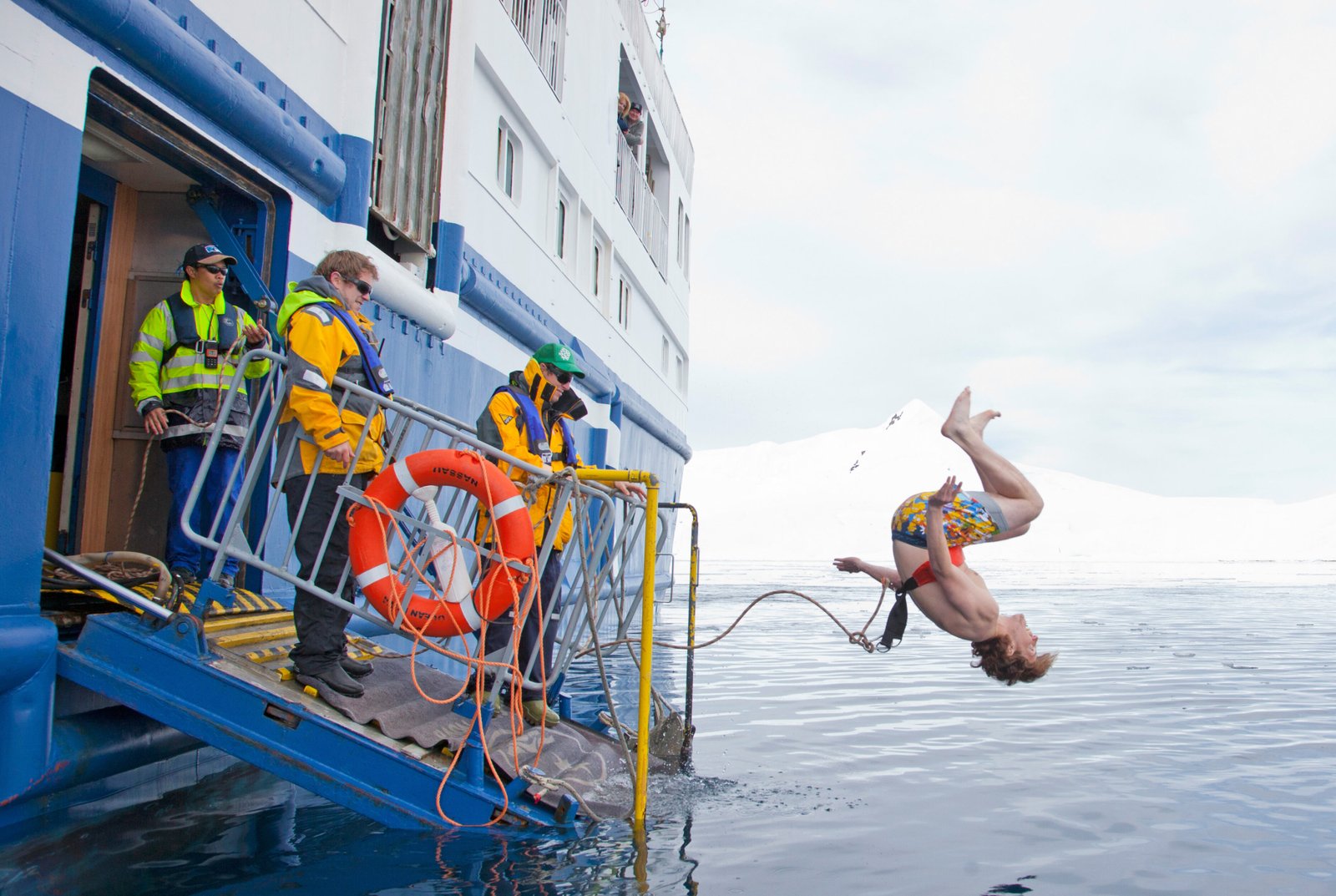

Day 1: ARRIVAL PUNTA ARENAS, CHILE
Arrive in Punta Arenas before 2:00 pm, where you will be welcomed by the Antarctica21 staff and transferred to your hotel. Today, you will have a mandatory briefing with important trip information. In the evening, enjoy dinner of typical Chilean food with your fellow adventurers.
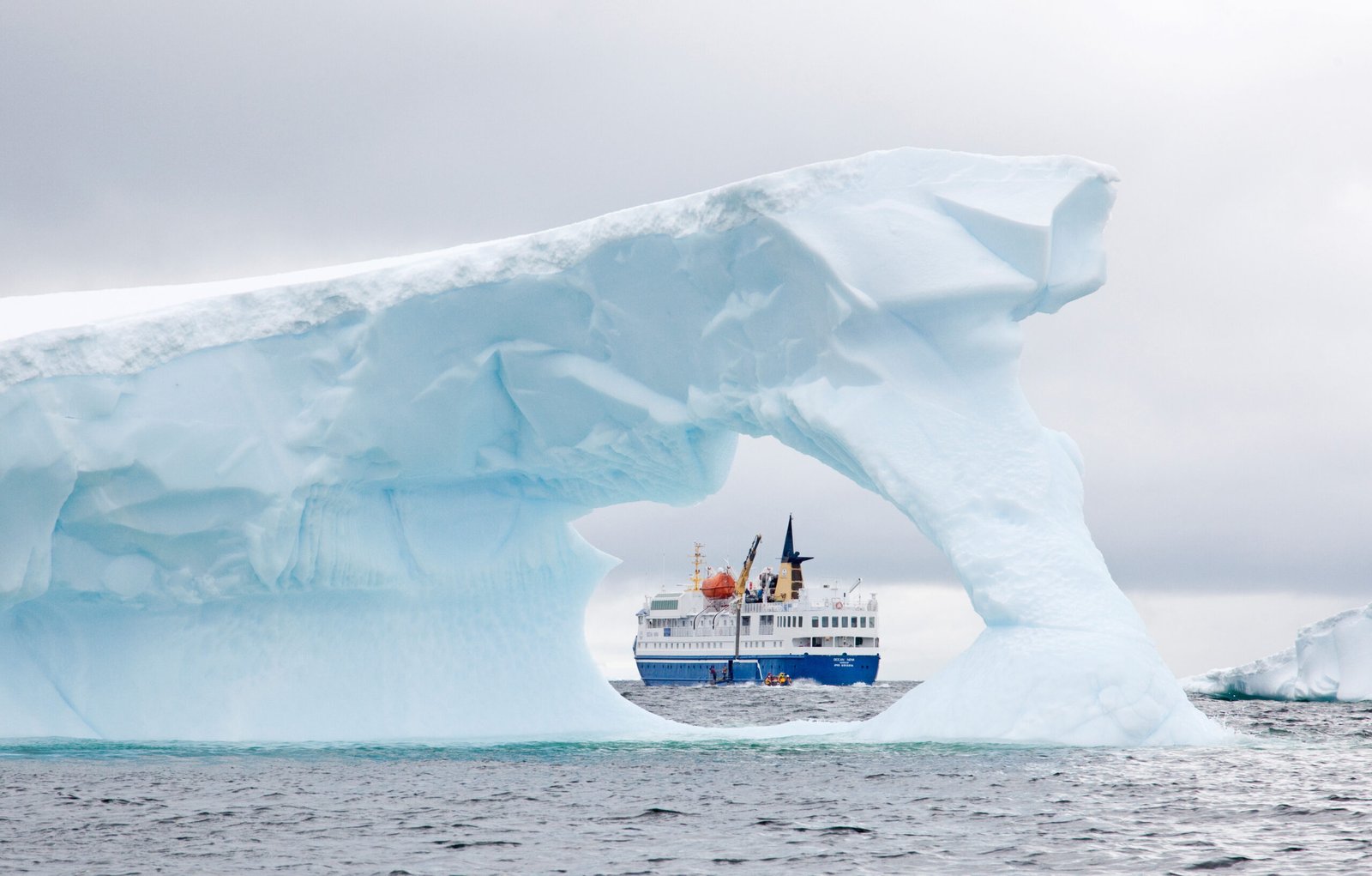
DAY 2: SCHEDULED FLIGHT TO ANTARCTICA
Your Antarctic adventure begins with a two-hour flight from Punta Arenas to King George Island, in the South Shetland Islands. As you exit the airplane, the clear Antarctic air fills your lungs for the first time. You then walk 2-km (1.25-mi), passing Chile’s Frei Station and Russia’s Bellingshausen Station to reach the shore and board a Zodiac that will take you to your boutique expedition vessel.

DAY 3: EXPLORING ANTARCTICA
Cruise between the South Shetland Islands and the western coast of the Antarctic Peninsula, sailing along ice-filled fjords and among spectacular icebergs, while enjoying the company of seabirds, penguins, seals, and whales. Each day disembark by Zodiac and explore the landscape together with expert polar guides. Onboard the ship, attend an engaging program of educational presentations and enjoy spectacular views from the lounge while sharing your daily adventures with fellow guests.
No journey is the same and flexibility is the key to success in Antarctica. The Expedition Team plans the voyage route to take advantage of the ever-changing opportunities provided by nature, crafting a unique and extraordinary experience every time. While the exact itinerary changes with each expedition, you will explore several spots that offer the best possible overview of the varied Antarctic environment. Your voyage may include visits to sites in the South Shetland Islands, the Antarctic Sound, the Garlache Strait, and the Penola Strait.
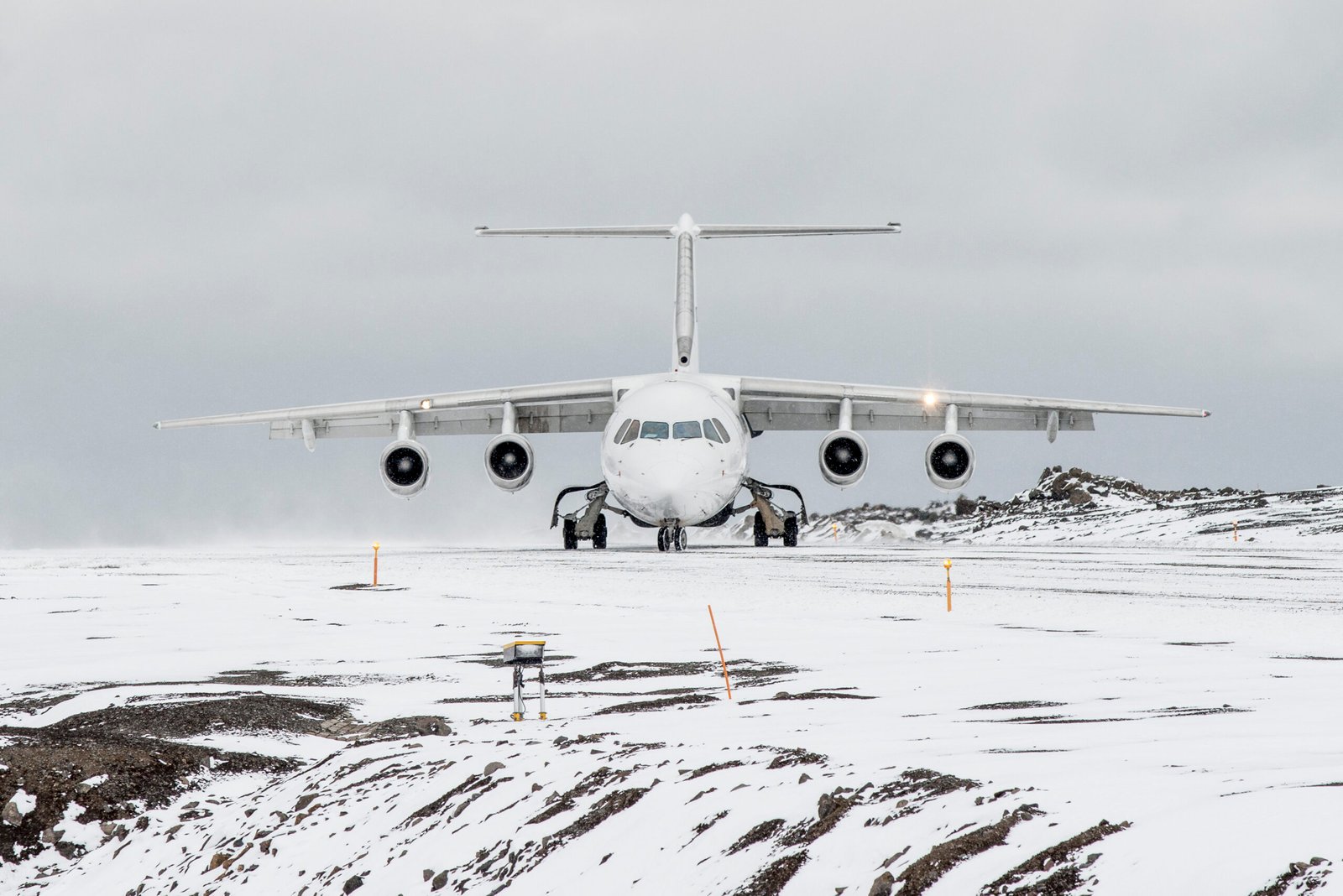
DAY 7: SCHEDULED RETURN FLIGHT FROM ANTARCTICA
Return to King George Island and bid farewell to Antarctica before boarding the flight back to Punta Arenas. Upon arrival, transfer to your hotel for the night. (Note: Meals in Punta Arenas are at your leisure and not included in the program).
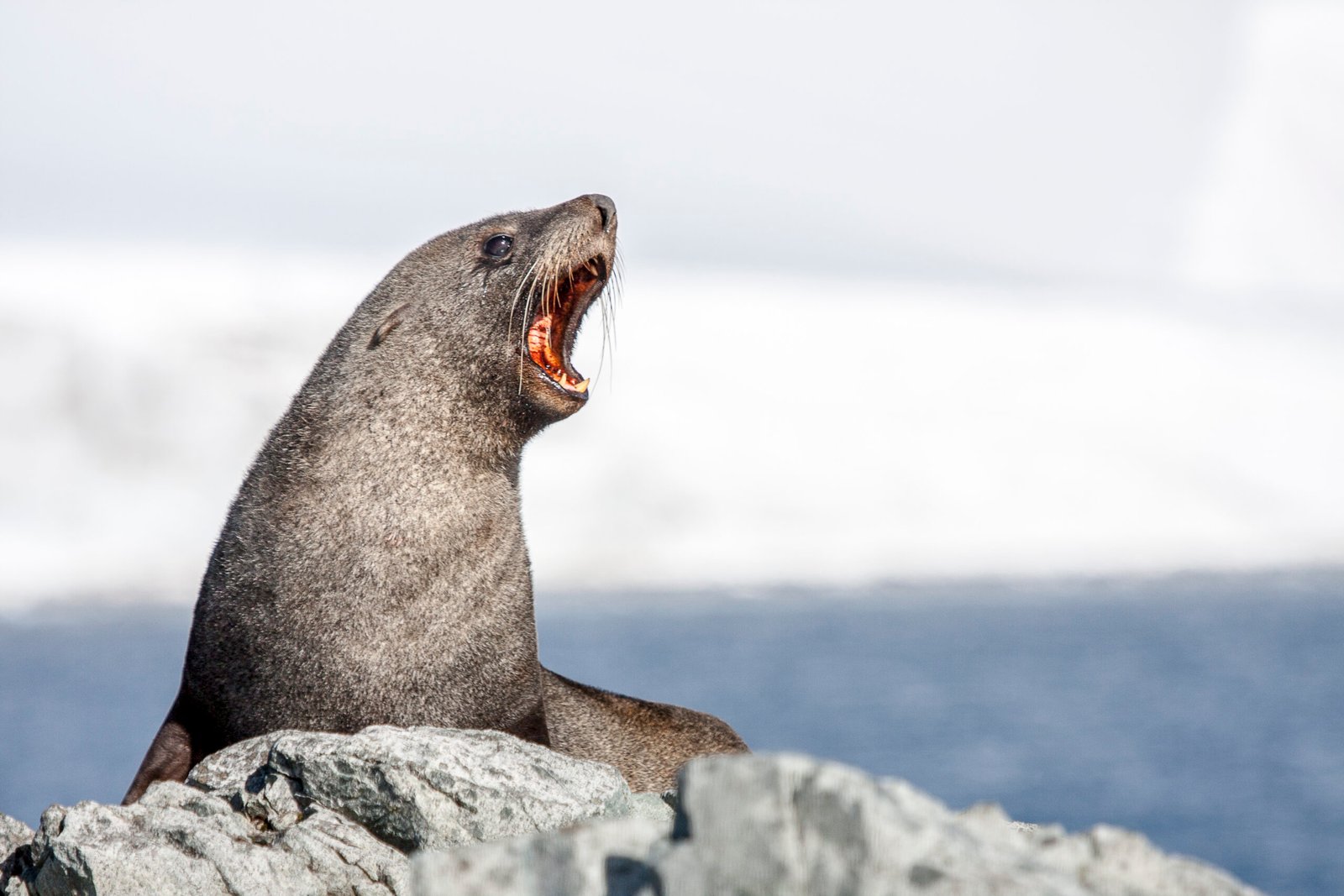
DAY 8: END OF THE AIR-CRUISE
The Classic Antarctica air-cruise is our most popular Antarctica expedition itinerary. Once arriving by flight to Antarctica, you will sail between the South Shetland Islands and the western coast of the Antarctic Peninsula. Enjoy seeing ice-filled fjords and spectacular icebergs, while spotting penguins, seals, and whales that call the White Continent home. The Classic Antarctica air-cruise is available on all three of our expedition ships.
WHAT MAKES ANTARCTICA21 UNIQUE?
Air-Cruise Experts
We pioneered air-cruise expeditions to Antarctica. That remains our focus. As a specialist, we understand intimately how to coordinate air and sea operations in the changeable Antarctic environment. We have completed over 200 fly and cruise departures, more than any other company. We bring that experience to your journey.
Antarctica is our Backyard
Our company was founded in Punta Arenas, Chile, the traditional gateway for the first Antarctic explorers. As local actors in this remote region, we have built a solid infrastructure and an extensive network of key relationships to support your expedition.
Explorers House: A Warm Welcome
Located only a few blocks from your hotel, Antarctica21’s new Explorers House is your exclusive base in Punta Arenas. Feeling like a private club, it is a purpose-built open space where you can prepare for your expedition by attending briefings, practicing your Zodiac-boarding skills, shopping for expedition gear, and more.
Flight Advantages
Unlike some companies, Antarctica21 uses a single flight to carry all guests on an expedition to and from the White Continent. We also have priority over the flight window, allowing us to choose the optimal flight time based on conditions. For you, this means more efficient operations and a reduced chance of weather-related delays.
Small, Boutique Ships
Our expedition ships welcome a maximum of 75 guests. That means disembarking and embarking in Antarctica is faster and smoother. You spend more time seeing what you came to see, not waiting for your turn.
Private Antarctic Vehicle
Our rugged, go-anywhere polar transporter, custom-designed and built for Antarctica21, supports your trip’s operations at King George Island. Its traction system can adapt to the changeable conditions of the Antarctic terrain.
High Staff-to-Guest Ratio
On every journey, our Antarctica21 team includes at least 12 expert polar guides and their number one priority is ensuring you have an unforgettable experience. Our team knows the region’s unique geography, natural history, wildlife and ecology, and loves sharing their expertise with you.
Itinerary: The itineraries are subject to change due to weather conditions at certain times of the year.
MAGELLAN EXPLORER: Innovative Technology / Modern Design
Antarctica21 offers two state-of-the-art small passenger vessels:
Magellan Explorer| Stunning modern expedition vessel custom-built for Antarctic air cruises to crush the ice in its path. Magellan Explorer has a capacity for 73 passengers in seven accommodation categories, including dedicated single cabins. Nealy, all cabins feature private balconies. All cabins feature a wardrobe, an individually controlled heating system, a sitting area, and a private bathroom with a shower and heated floors. The ship features a glass-enclosed observation lounge and presentation room with state-of-the-art audio-visual equipment, a fleet of zodiacs, a spacious and stylish dining room, a well-stocked bar, a library, a meeting room, a gym, a sauna, and a medical clinic. The forward-facing observation deck leads to the bow of the ship, which is accessible to guests to offer proximity to marine wildlife. The ship has a fleet of 10 Zodiac boats that are well suited for disembarking and wildlife watching.
Magellan Explorer is a modern expedition vessel custom built for our Antarctic air-cruises. The ship was constructed in Chile to the latest Polar Code specifications and launched in 2019.
Our air-cruises, Magellan Explorer has seven categories of accommodation, including dedicated single cabins. All cabins except Porthole Cabins feature private balconies. All double cabins, except two, have two twin beds that can be configured as one king-size bed. All cabins feature a wardrobe, an individually controlled heating system, a sitting area, and a private bathroom with a shower.
Specifications
Passengers: 73 maximum on air-cruises
Expedition Staff & Crew: 60
Lifeboats: 2, fully enclosed, capacity of 160 (in addition to 8 life rafts, capacity of 160)
Length: 90.7 m
Breadth: 16.2 m
Draft: 4.3 m
Propulsion: Diesel engines, 3,440 kW
Ice Class: LR PC6
Cruising Speed: 14 knots in open water
OCEAN NOVA: Strong and Mighty / Active Adventure
Ocean Nova | Ocean Nova is an incredible ship for Antarctica expeditions. It is a sturdy and elegant expedition vessel built to sail the ice-choked waters enabling this ship to go places that no other expedition ship can access. Ocean Nova has a capacity of 67 passengers accommodated in comfortable cabins. All cabins feature a picture window, a writing desk with a chair, a wardrobe, an individually controlled heating system, and a private bathroom with a shower. In addition to a glass-enclosed observation lounge and presentation room, Ocean Nova also has a spacious dining room, a bar, a library, a small gym, a fleet of zodiacs, and an infirmary. The ship has a fleet of 7 Zodiac boats that are well suited for disembarking and wildlife watching.
Ocean Nova is a sturdy and nimble expedition vessel. This ship was built in Denmark in 1992 to sail the ice-choked waters of Greenland. It has ice-strengthened hull that is ideally suited for expedition travel in Antarctica. The ship was fully refurbished in 2006 and since then has benefitted from annual upgrades and improvements.
The ship´s outside cabins offer three categories of accommodation: dedicated Single Cabins, Twin Cabins, and Triple Cabins. All cabins feature a picture window, a writing desk with chair, a wardrobe, individually controlled heating system, and a private bathroom with a shower.
Specifications
Passengers: 67 maximum on air-cruises
Expedition Staff & Crew: 46
Lifeboats: 2, fully enclosed, capacity of 110 (in addition to 4 life rafts, capacity of 100)
Length: 73.0 m
Breadth: 11.0 m
DRAFT: 3.7 m
Propulsion: Diesel engines, 2,000-horsepower
Ice Class: 1B, EO (Hull Ice 1A)
Cruising Speed: 12 knots in open water
ITINERARIES AT A GLANCE
Classic Antarctica Air Cruise | 8 days 7 nights | 5 nights onboard the ship
The Classic Antarctica air cruise is our most popular Antarctica expedition itinerary. Once arriving by flight to Antarctica, you will sail between the South Shetland Islands and the western coast of the Antarctic Peninsula. Enjoy seeing ice-filled fjords and spectacular icebergs while spotting penguins, seals, and whales that call the White Continent home.
Polar Circle Air Cruise | 10 days 9 nights | 7 nights onboard the ship
The Polar Circle air cruise is one of the most adventurous expeditions that we offer. Our main objective on this air-cruise expedition is to try and reach the Antarctic Polar Circle, located approximately 66° south of the equator. The Expedition Team handcrafts every voyage depending on the Antarctic weather, and each day of the Polar Circle air cruise is filled with ample opportunities to explore
Antarctica & the South Georgia Air-Cruise | 16 days 15 nights | 14 nights on the ship
Join us for a remarkable experience that takes you through the western Antarctic Peninsula, through Elephant Island to South Georgia. The South Georgia and Antarctica air cruise allows you to sail through the nutrient-rich waters and disembark each day with our expert polar guides having time to hike, snowshoe, or kayak in bays nearby. As we make our way to South Georgia, you will follow in the footsteps of famous Antarctic explorers like Ernest Shackleton and learn about their daring southerly adventures. After reaching South Georgia, visit some of the largest colonies of penguins in the world, including the king penguin, and see the nesting grounds of thousands of albatrosses.
Contact us for more information.
ARRIVAL AND DEPARTURE DETAILS
Review the important details below about arrival and departure for your air-cruise, and make your travel plans accordingly. Ask your booking agent for assistance as needed.
Getting to your Antarctic gateway
Depending on your air-cruise itinerary, you will be using Punta Arenas, Chile or/and Ushuaia, Argentina as your Antarctic gateway. Please contact nicola@finisterra.ca for assistance.
Many international airlines land daily at Santiago’s Arturo Merino Benitez airport. From there, several airlines connect the capital of Chile and Punta Arenas.
Many international flights also land daily at Buenos Aires’ international airport, Ezeiza. Connections to Ushuaia are available from Ezeiza airport and from the domestic Aeroparque Airport. Overland transportation by bus between Punta Arenas and Ushuaia, a 12-hour journey, is also available.
Trips starting in Punta Arenas
If you are joining an air-cruise starting in Punta Arenas, you must plan to arrive with a flight that is scheduled to land in Punta Arenas no later than 2 PM on Day 1 of the itinerary. The same deadline applies to travellers arriving directly at the hotel on Day 1.
That afternoon, all travelers must attend a mandatory safety and Antarctic guidelines briefing, and an information session covering important practical details. You must also attend a fitting session for your expedition boots. Participation in these activities is essential for the success of the expedition.
Travelers who miss the 2 PM arrival deadline will be considered “no-show”. They will not be able to participate in the expedition and will receive no refund.
Remember that scheduling tight connections is never wise when traveling to remote places with limited services. Protect your travel investment by building some buffer in your travel plans in case of problems with luggage delivery, flight delays etc. In case your flight to Punta Arenas is delayed for reasons beyond your control, Antarctica21 will do everything possible to accommodate your late arrival. However, Antarctica21 cannot assume any responsibility for any resulting complications, including your inability to join the expedition. We recommend that you purchase a trip cancellation and interruption insurance policy to cover this risk.
Trips ending in Punta Arenas
Antarctica21 strongly suggests that any travel plans made for the last day of the expedition do not start until the late afternoon, and that a flexible air ticket be held for your journey home in case you need to change your travel arrangement following a delay of the return flight from Antarctica. Please ask your travel consultant for assistance. See also the sections on possible flight delays and related contingency plans further down.
HOTEL AND TRANSFER PACKAGE
Most air-cruises start and end in Punta Arenas. Should you wish to arrive in Punta Arenas a day earlier, or should you wish to spend an extra night there after you return from Antarctica, we offer a convenient Hotel and Transfer package.
The package includes accommodation at the Cabo de Hornos Hotel or similar and combines perfectly with your Antarctic air-cruise. With a single check-in you will ensure that the hotel room for your extra night in Punta Arenas is the same as that included in your air-cruise itinerary.
The package is available pre-expedition and post-expedition and includes:
– Dedicated group airport transfers
– 1-night hotel accommodation with breakfast and drink voucher
Cancellation conditions
In the case of cancellation 120 days or more prior to departure, Antarctica21 will refund 50% of the amount paid. In the case of cancellation 119 days or less prior to departure, there will be no refund.
Please note that Antarctica21 only offers airport transfers as part of its packages. Antarctica21 does not arrange individual airport transfers.
IMPORTANT NOTES
PLEASE NOTE: This itinerary is subject to change. Although we always do our best to stick to the itinerary, due to the ever-changing nature of Mother Nature, activities, hotels, and visits are subject to change due to forces beyond our control.
FLIGHTS: Please do not purchase your flights until this tour is confirmed.
PASSPORTS: Must be valid for at least 6 months upon return date to your home country. Proper documentation is the responsibility of each traveller.
VISAS: (responsibility of the traveller)
Travel Insurance
Cancellation, Travel, Flight, and Health insurance are required and are the responsibility of the participant to research and secure the appropriate coverage. Click HERE for a Travel Insurance Quote or please email nicola@finisterra.ca for a quote.
Check with your local travel agent /insurance provider/health plan for advice about traveling overseas.
Waiver Form
All participants will be required to sign a Waiver Form prior to departure.
OUR COMPANY
Antarctica21 was founded in 2003 by people who believed there was a better way to travel to Antarctica. Since then, our company has been providing quick, intimate expeditions to Antarctica and beyond.
Our Style and Philosophy: As a boutique specialist, we design and deliver adventurous yet comfortable small-scale expeditions to Antarctica. We aim to offer guests the perfect balance between active exploration and high-quality hospitality.
Our People: Our team of international Antarctic pilots, experienced sea captains, expert polar guides, academics, and seasoned travel professionals create the Antarctica21 experience. With passion, creativity and dedicated teamwork, each expedition is handcrafted, unique and personal.
Commitment: Antarctica21 is the leader in this fast-growing segment of Antarctic tourism, constantly developing and innovating our programs and operations. As a member of the International Association of Antarctica Tour Operators (IAATO), we consider every detail of our planning and operations with the goal of minimizing our environmental impact.
STARTS FROM
USD per Person
PLEASE CONTACT US FOR MORE DETAILS OR OTHER EXPEDITION CRUISE OPTIONS.
WHY TRAVEL WITH US?
At Finisterra Travel we help you discover, push personal boundaries, and explore the unknown.
We are super passionate about sustainable, transformational, and adventure travel. Definitely not “armchair travellers”, we have firsthand experience of where you’ll be heading. No one wants to feel like a tourist which is why when we plan a custom travel experience for you, we strive to make your adventure as authentic as possible. We offer an array of Small Group Adventures & Custom Trips, and have something for every type of traveller.
Our unique itineraries are designed to best showcase some of our favourite destinations around Africa, Asia, Latin America, the Middle East, North America, and Europe. All itineraries are fully-customizable. Not your typical online travel agency, nor are we quite a tour operator, we are international travel designers with a flair for unique experiences. We’d love to hear from you!
JOIN OUR FINISTERRA TRAVEL COMMUNITY
Stay up-to-date with us when you sign up for our newsletter.
